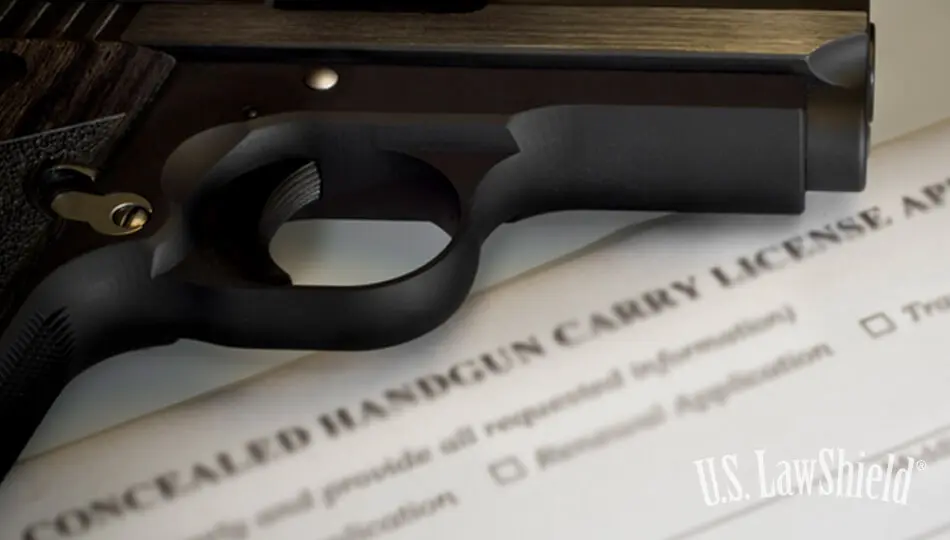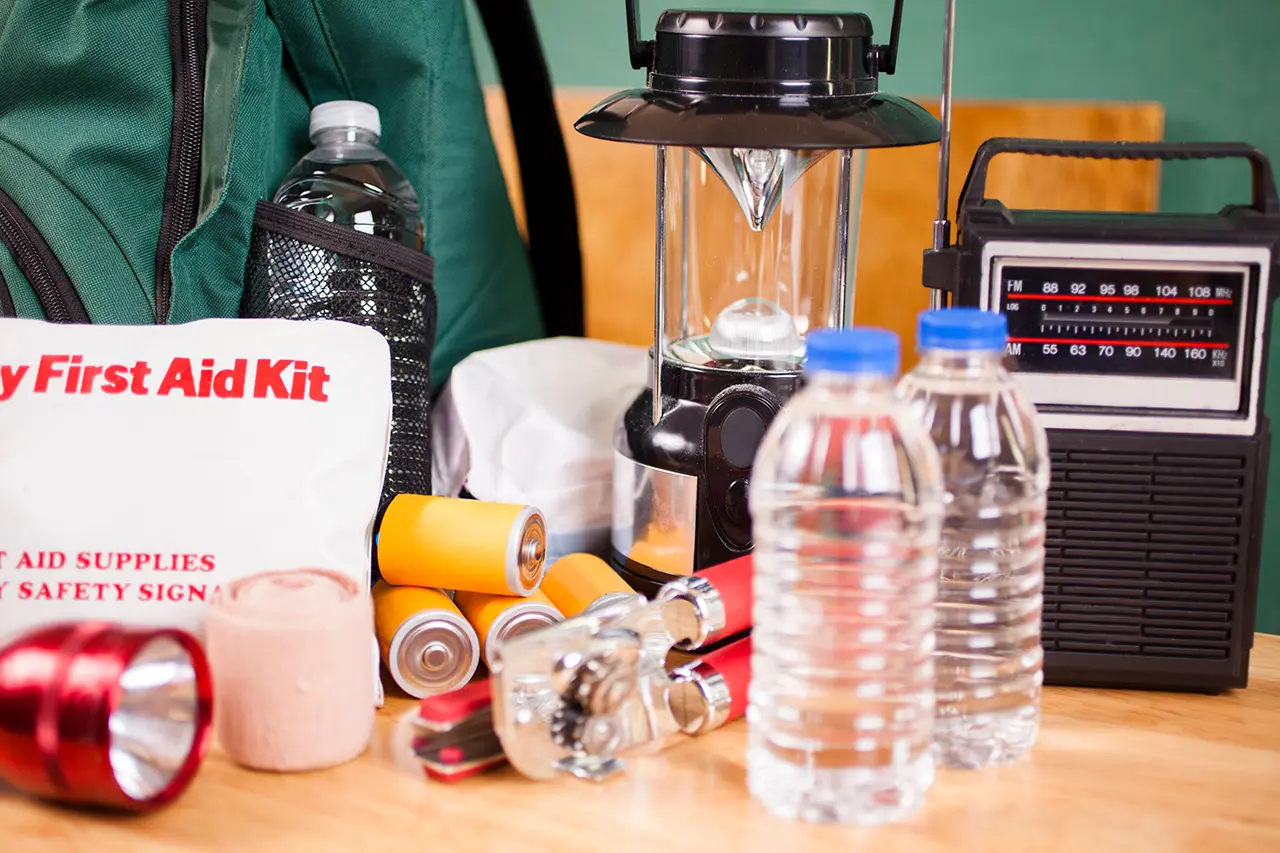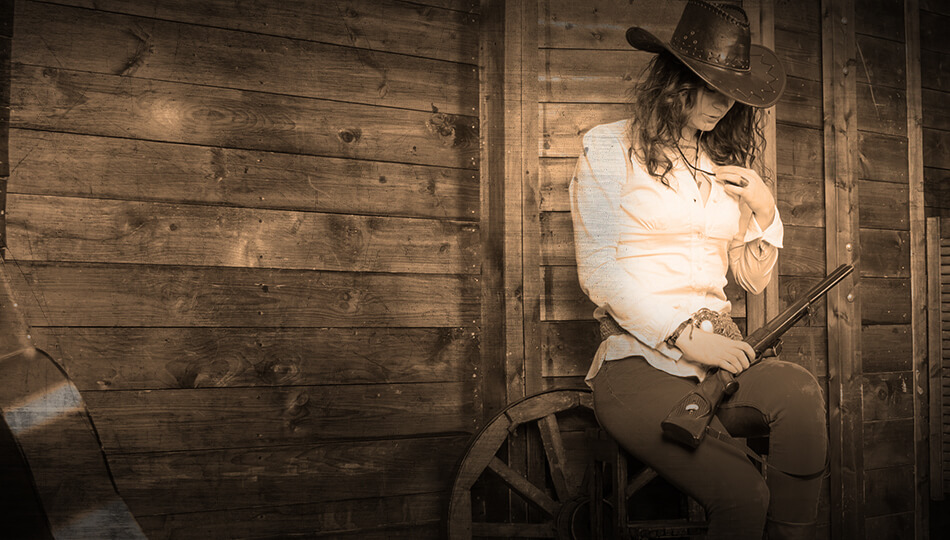
With 25 states now having adopted permitless carry, also known as constitutional carry, it appears that the national attitude regarding who should be allowed to carry a gun in public is shifting more and more towards a general pro-gun stance. While permitless carry states still maintain some restrictions on who can carry a firearm, as well as where and how that firearm can be carried, for the most part if someone is legally allowed to own a firearm in a state with a permitless carry law in place, they may carry it concealed in public. Except for Vermont, all the states that have a permitless carry law still have a permitting process in place for those who wish to obtain one. The state simply doesn’t require eligible residents who wish to carry a concealed handgun in public to get a permit to do so.
If you’re wondering why a state wouldn’t require a permit to carry a concealed handgun, but would still have a process for obtaining one, the answer is relatively simple. If you live in a permitless carry state and want to carry a concealed handgun in other states, you’re going to need a permit for reciprocity. Not every state recognizes every concealed carry permit, but unless you happen to be traveling to a state that has permitless carry for non-residents, you’re going to need a concealed carry permit recognized by the state you’re traveling to if you want to carry a gun concealed. Remember, if you’re traveling by car, you’ll also need to deal with the laws of each state you’re traveling through as well.
How Attitudes Towards Permitless Carry Have Changed
It’s impossible to put a number on how many individual personal attitudes may have changed regarding permitless carry, but one thing that’s irrefutable is that there has been a significant rise in the number of states adopting permitless carry in the last 20 years. Prior to 2003, Vermont was the only state where it was legal to carry a concealed firearm without any sort of permit at all. In 2003, Alaska became the second state to allow eligible residents to carry a concealed firearm with no permit. Since then, 23 other states have enacted some form of permitless carry. Of the 25 states that allow permitless carry, 21 have passed these laws in the last seven years. Put another way, there has been a 525% increase in the number of permitless carry states during the last seven years.
While the conversation surrounding gun control remains just as divisive as ever on the national level, recent history would suggest that state lawmakers increasingly see a benefit to removing the permit process traditionally associated with carrying a concealed gun in public. Professor David Yamane of Wake Forest University notes that:
…since the rise of the shall issue era, no state has gone from a liberalized carry regime to a more restrictive one. That is, no permitless carry state has gone back to shall issue, and no shall issue state has gone back to may issue. It seems unlikely that pattern will change in the future. (Yamane, Concealed Weapon Carry Laws in the US: A Primer)
So, while the debate rages on, the reality is that the last 40 years have seen a massive increase in the ability for normal everyday people to choose to carry a concealed firearm and be able to do so legally. Given the trend of the last seven years specifically, and the number of states that have some variation of a permitless carry bill making its way through their respective legislatures, it’s not unreasonable to assume that sometime soon permitless carry will be the most common way that states choose to handle their concealed carry permitting structure.
Is Permitless Carry a Threat to The Public?
According to a survey from 2018, there are at least 393 million privately owned firearms in the United States. Today, that number is likely higher. Keep in mind, that as of 2022 the U.S. population is estimated to be 332 million.. All of this adds up to something that’s relevant to the overall conversation regarding permitless carry: There are currently more guns than people, in the United States. This is important information to keep in mind because the reality is that the number of negative incidents associated with firearms is incredibly low when compared to just how many firearms there are. Yamane examined data available to the public regarding firearms ownership as well as the negative outcomes associated with firearms and found that:
In any given year, the vast majority of America’s tens of millions of gun owners will not have any negative outcomes associated with their hundreds of millions of guns.
Anyone who wants to do the division on all of the above negative outcomes can. For my purposes here, I will just select some of the combined categories at the end for summary purposes.
TOTAL FATALITIES****
39,413 / 400,000,000 (firearms)= 0.000098 fatalities per firearm
39,413 / 76,560,000(U.S. adult gun owners) = 0.00052 fatalities per gun owner
39,413 / 51,440,000 (households that have a firearm) = 0.00077 fatalities per gun owning household
A mere 0.0098% of guns, 0.052% of gun-owners, and 0.077% of gun owning households are involved in fatalities involving firearms annually.
Looked at the other way around, 99.999% of guns, 99.95% of gun owners, and 99.92% of gun owning households are NOT involved in any fatalities involving firearms annually. (Yamane, Light Over Heat #1: Just How Normal Are Guns and Gun Owners, Anyway?)
It’s important to note that Yamane’s observations regarding the available data doesn’t account for repeat offenders, or the same gun being used in multiple negative events. Additionally, there’s no consideration for the percent of incidents that jeopardize the public versus those that effect only a single individual. While it’s impossible to know exactly what the numbers would be if those factors were considered, there’s quite a bit of evidence that suggests the public is at risk of violence from only a small percentage of its members:
The majority of violent crimes are perpetrated by a small number of persistent violent offenders, typically males, characterized by early onset of violent criminality, substance abuse, personality disorders, and nonviolent criminality. (Falk et al., The 1% of the population accountable for 63% of all violent crime convictions)
Enjoying this content? Find out how you can get more sent straight to your inbox.
All of this suggests that despite the concerns expressed by some regarding the danger of permitless carry to public safety, there’s very little reason to think that those who are eligible to carry a concealed handgun in a permitless carry state will ever be involved in a negative outcome with a firearm or jeopardize the safety of anyone. Yamane’s conclusion regarding the data he examined is particularly relevant here:
Without trivializing the direct and indirect effects of serious mistakes, negative outcomes, or criminal victimization with firearms, these data underwrite my idea that guns are normal and normal people use guns.
The overwhelming majority of guns, gun owners, and gun owning households are not involved in any of the deviant behaviors involving firearms analyzed above.
The perspective that underwrites my work inverts the typical questions social scientists ask about guns: As plentiful as gun owners and as dangerous as guns are, why are there so FEW negative outcomes with guns in general? (Yamane, Light Over Heat #1: Just How Normal Are Guns and Gun Owners, Anyway?) (emphasis added)
Should a Concealed Carry Permit Be Required for Safety?
Self-defense is a basic human right. The fact of the matter is that applying for a concealed carry permit, especially if training is required, has a monetary value attached to it. In addition to the fees associated with the permit itself, there are also the fees associated with taking whatever training class is required by the permitting process. So, the question isn’t really whether a concealed carry permit should be required. The question is should people be forced to pay the government money to have access to a basic human right or should those be available to people for free? Different people will have different answers to that question.
If someone thinks that yes, it’s reasonable to attach an entry fee to a basic human right, the next question becomes even more important. Are the people most effected by such an entry fee the people most likely to need to defend themselves against a violent crime?
Persons in poor households at or below the Federal Poverty Level (FPL) (39.8 per 1,000) had more than double the rate of violent victimization as persons in high-income households (16.9 per 1,000). (Harrell, 2014, Household Poverty and Nonfatal Violent Victimization, 2008-2012)
Given the data that’s available, a very strong argument could be made that fees associated with concealed carry permitscould place an undue burden on people of lower socioeconomic status. If you accept that concealed carry permit fees can in fact create an undue burden, the final question is: Should safety only be accessible to the people who can afford it?
Given the data that’s available, a very strong argument could be made that fees associated with concealed carry permits could place an undue burden on people of lower socioeconomic status. If you accept that concealed carry permit fees can in fact create an undue burden, the final question is: Should safety only be accessible to the people who can afford it?
No Carry Permit Required: A Gun for Everyone?
States that enact permitless carry do still include eligibility requirements that must be met before someone is able to legally carry a concealed gun in public. While it’s often framed by gun control proponents like Everytown for Gun Safety as a system that lets anyone carry a gun concealed in public to the detriment of public safety, the reality is that the people who would have been denied a concealed carry permit under previous systems would likely not be able to carry a gun legally under any permitless carry law.
Any prohibited person who attempted to carry a concealed firearm thinking that a permitless carry law made it legal to do so, would be mistaken. If, due to their status as a prohibited person, it’s against the law at the federal level for someone to possess a gun, a state enacting a permitless concealed carry law doesn’t change that. Law enforcement officers have a policy of arresting anyone they find carrying illegal weapons. What falls under the illegal weapons category will vary from state to state, but a prohibited person carrying a firearm is always illegal no matter what permitless concealed carry law is in place. Felons who carry concealed guns illegally before permitless concealed carry, are still felons breaking the law after permitless concealed carry.
The simple fact of the matter is that states that enact permitless carry still have structures in place that make it illegal for a criminal to carry a gun concealed in public. Permitless carry simply places less burden on law-abiding people who wish to exercise their rights under the Second Amendment. While permitless carry does remove the requirement for training, most responsible gunowners already understand the value of training when it comes to safety, whether it be basic operation of a firearm, or keeping oneself safe in public. That’s why so many U.S. LawShield® members take advantage of the many additional benefits available to them beyond self-defense coverage, whether it be access to a non-emergency attorney hotline to learn the answers to questions regarding firearms law, or online educational resources. Responsible gunowners know the value of being prepared, and U.S. LawShield members have the peace of mind that comes from having legal defense for self-defense.
Permitless Carry FAQ’s
Your Protection Starts Here!
The information provided in this publication is intended to provide general information to individuals and is not legal advice. The information included in this publication may not be quoted or referred to in any other publication without the prior written consent of U.S. LawShield, to be given or withheld at our discretion. The information is not a substitute for, and does not replace the advice or representation of a licensed attorney. We strive to ensure the information included in this publication is accurate and current, however, no claim is made to the accuracy of the information and we are not responsible for any consequences that may result from the use of information in this publication. The use of this publication does not create an attorney-client relationship between U.S. LawShield, any independent program attorney, and any individual.





By the constitution it doesn’t say you can regulate anyone from owning a firearm it was a right for everyone way before the founding fathers and that’s not going to change all due to respect and I know the gun control there trying to use on certain people isn’t going to deter crime at all and if they want to make it mental defective everyone is no one is perfect but to put innocent people on the criminal watch list or people that say offensive jokes is just wrong and infringement
I believe that permitless carry is a good thing as long as there is a provision that persons, such as Felons, cannot legally carry.
Anyone that is willing to take the chance is going to carry no matter what the law says!
Please name the 25 states now having adopted permitless carry
The following is a list of Constitutional carry or permitless carry states — PC for ‘Permitless Carry,’ followed by the age requirements; A date is listed if the law has not taken effect in the state yet. (Nebraska is *open carry only,* whereas concealed carry is against the law.)
Alabama (PC-21 as of January 1, 2023)
Alaska (PC-21)
Arizona (PC-21)
Arkansas (PC-18)
Georgia (PC-21 and 18 for members of the military)
Idaho (PC-18)
Indiana (PC-18 as of July 1, 2022)
Iowa (PC-21)
Kansas (PC-21)
Kentucky (PC-21)
Maine (permits recognized; see Maine reciprocity section for details or PC-21)
Mississippi (PC-18)
Missouri (PC-19 or 18 for members of the military)
Montana (PC-18)
New Hampshire (PC-18)
North Dakota (PC-18 for residents only and concealed carry only)
Ohio (PC-21 as of June 12, 2022)
Oklahoma (PC-21 or 18 for military)
South Dakota (PC-18)
Tennessee (PC-21 or 18 for members of the military)
Texas (PC-21)
Utah (PC-21)
Vermont (PC-18)
West Virginia (PC-21)
Wyoming (PC-21)
Rules and laws vary from state to state that may restrict the legality of carrying a firearm even under the Constitutional carry laws. Be sure to check each state’s website or with a reputable source to stay within the bounds of the law.
Can my wife PC a pistol registered in my name?